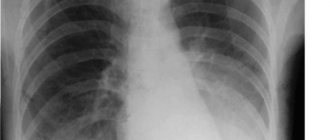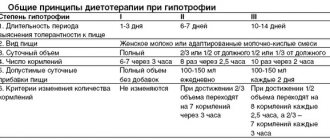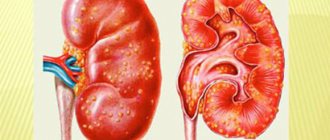What is atypical pneumonia
This general term combines infectious lung lesions caused by atypical pathogens. The disease is transmitted by airborne droplets. Local outbreaks in children's groups and families are typical.
Atypical pneumonia in all age groups is diagnosed more often in the winter months.
Uncharacteristic pathogens of pneumonia
Atypical infectious agents have different microbiological characteristics. The symptoms they cause differ in the pattern of occurrence, course and spread. All uncharacterized microorganisms exhibit high resistance to treatment with common types of antibiotics. Atypical pathogens of pneumonia:
- mycoplasma;
- chlamydia;
- influenza A, B viruses;
- legionella;
- Coxiella;
- respiratory syncytial virus;
- hantavirus;
- coronavirus;
- respiratory parainfluenza virus;
- causative agents of leptospirosis, tularemia;
- Epstein-Barr virus.
Causes, symptoms and signs of atypical infections
The population's susceptibility to atypical pathogens is very high. The infectious agent is usually transmitted by airborne droplets when working in closed groups. It is very often observed in children in the form of epidemics in kindergartens and schools.
The first clinical symptoms appear 3-10 days after contact with the patient. Bacteria, protozoa, viruses, and fungi can cause an atypical form of the disease. The most common:
- mycoplasma;
- legionella;
- Coxiella;
- viruses;
- causative agent of leptospirosis;
- causative agent of tularemia;
- hantaviruses;
- coronaviruses (SARS).
Due to the proliferation of these infectious agents inside the cell, difficulties arise in their laboratory diagnosis. Despite their different microbiological, epidemiological and pathogenetic features, they are united by their resistance to β-lactam antibiotics and sulfonamides.
Atypical pneumonia is characterized by smoothed symptoms of pulmonary manifestations with a predominance of severe intoxication in the clinical picture.
The main signs of atypical pneumonia:
- a small amount of sputum;
- faint manifestations on the radiograph;
- unexpressed leukocytosis in the blood;
- severe headaches;
- heat;
- muscle pain;
- severe weakness;
- discrepancy between the severity of intoxication and physical and radiological data;
- lack of positive effect from taking sulfonamides and beta-lactam antibiotics.
Often, changes on radiographs precede clinical symptoms. And with severe immunodeficiency, a more sensitive computed tomography method is required to diagnose very small lesions.
Depending on the pathogen, each atypical pneumonia has its own characteristics.
Classification of pathology and its manifestations
Atypical pneumonia has several forms, depending on the type of pathogen:
- chlamydial;
- mycoplasma;
- acute respiratory syndrome;
- Legionnaires' disease;
- Q fever.
Signs of mycoplasma pneumonia
The causative agent of pulmonary infection is Mycoplasma pneumoniae.
The mycoplasma form of the disease has mild symptoms and a sluggish course compared to other types of pneumonia.
With reduced immunity, the pathology is severe. The incubation period lasts from 1 week to a month. The upper respiratory tract is affected.
Mycoplasma pneumonia occurs in the form of laryngitis, catarrhal nasopharyngitis, and acute tracheobronchitis. The following symptoms are noted:
- non-productive paroxysmal (paroxysmal) cough;
- nasal congestion;
- sore throat;
- dry nasopharynx;
- hoarseness of voice;
- low-grade fever;
- sweating;
- weakness;
- skin rashes;
- muscle pain;
- inflamed jaw lymph nodes.
Symptoms of atypical chlamydial pneumonia
The pathology is caused by intracellular bacteria of the genus Chlamydia and Chlamydophila. The incubation period for chlamydial pneumonia lasts up to three weeks. The disease has a mild but protracted course. The first signs of the disease may appear 10–14 days after infection. This:
- hacking cough;
- sinusitis;
- throat hyperemia;
- body temperature up to 39 °C;
- skin rashes;
- conjunctivitis;
- wheezing in the lungs;
- neuralgia.
Legionnaires' disease
The causative agent of the disease is L. Pneumophila, belonging to the genus Legionella. The incubation period of legionellosis is short – 2–10 days.
Article on the topic: Concussion in a child - symptoms, causes and manifestations, diagnosis, treatment methods and prevention
The inflammatory process grows rapidly and is accompanied by severe symptoms as it develops.
Intoxication appears in the first two days from the moment of infection. Symptoms of Legionnaires' disease:
- high body temperature (up to 40 °C);
- chills;
- severe headaches;
- loss of appetite;
- diarrhea;
- intense muscle pain;
- sweating;
- lethargy;
- fainting;
- hallucinations;
- delusional states.
Severe acute respiratory syndrome
This type of disease is caused by a coronavirus from the Coronaviridae family. This is one of the causative agents of lethal pneumonia. The incubation period is 2–10 days. Severe acute respiratory syndrome (SARS infection) is manifested by infectious, toxic and respiratory symptoms:
- high body temperature (up to 39 °C);
- headache;
- severe weakness;
- intense dry cough;
- runny nose;
- sore throat;
- heart rhythm disturbance;
- dyspnea;
- hypoxemia.
Clinical signs
At the beginning of its development, the atypical form of pneumonia can masquerade as a common cold, and only after 3-4 days, when inflammation engulfs most of the lung tissue, pronounced symptoms appear:
- low-grade fever, can reach 41˚C;
- headache, joint, muscle pain;
- profuse sweating;
- chronic weakness;
- pain in the chest area;
- heart rhythm disturbance;
- dyspnea;
- dry cough with difficult to clear sputum.
Signs of atypical pneumonia
Against the background of severe intoxication of the body, a person experiences severe weakness, no appetite, and dizziness. These symptoms are characteristic of almost all forms of atypical pneumonia, but depending on the pathogen, other ailments may be present.
A feature of the disease is the fact that in some adults or children, atypical pneumonia occurs without an increase in body temperature, which greatly complicates diagnosis and also does not cause concern for the sickest. In this case, a person may be bothered by a dry cough without sputum production.
Signs of atypical pneumonia may differ slightly, have less or more severe symptoms, which depend on the causative agent of the infection.
Chlamydial pneumonia
Atypical pneumonia of this type develops as a result of damage to the body by intracellular parasites - chlamydia. Infection occurs by airborne droplets, affects the population of any age category, and is more common in people with reduced immunity.
At first, the signs of the disease resemble a common cold, but after a couple of days, difficulty breathing, shortness of breath, cough join the general symptoms, and body temperature rises to 39°C. In children, chlamydial pneumonia is often complicated by lymphadenopathy and obstructive bronchitis.
The danger is that the disease is often diagnosed late when intracellular parasites establish themselves in both lungs, causing bilateral pneumonia.
The diagnosis is made based on a comprehensive examination. The X-ray image clearly shows interstitial or finely focal infiltration of the lungs. An analysis to detect immunoglobulins to pathogens is required. The treatment regimen is developed individually for each patient.
SARS or viral pneumonia
In this case, inflammation of the lung tissue is caused by a coronavirus infection. It is a complex and severe disease with a high risk of mortality. An outbreak of infection at the end of 2020 led to a pandemic, causing thousands of deaths in many countries around the world. The infection quickly spreads among the population through contact or airborne droplets, so in countries where outbreaks of infection have been recorded, strict quarantine measures have been introduced.
SARS, which appeared against the background of coronavirus, is characterized by nonspecific symptoms:
- lack of charm;
- headaches and muscle pain;
- chills;
- increased body temperature;
- increased sweating.
After 4-5 days, shortness of breath, dry cough, and hypoxia develop. In severe cases, respiratory failure develops. The patient is hospitalized in a hospital, where he is connected to a ventilator.
Treatment of coronavirus infection is symptomatic and is prescribed individually for each patient. There is still no drug or vaccine that can overcome Covid-19.
Legionella pneumonia
It is diagnosed in adults and practically never occurs in children. Air conditioning devices are considered the main source of the disease, so it occurs in office workers and store employees. The causative agent is the Legionella bacterium. Unlike other forms of atypical pneumonia, it develops rapidly even at the initial symptoms:
- temperature rises to 39-40°C;
- nonproductive cough;
- chills;
- dyspnea;
- purulent mucous sputum;
- hemoptysis.
Atypical pulmonary manifestations are characterized by vomiting, nausea, and muscle weakness. Lack of proper treatment will lead to the development of renal or respiratory failure. The risk of death with this type of pneumonia is quite high, so at the first manifestations of the disease you should seek medical help.
Mycoplasma pneumonia
The symptoms of such pneumonia resemble ARVI, followed by shortness of breath and chest pain, skin rash, and nosebleeds. An X-ray image reveals areas of infiltration in the form of blurry spots and shadows. The pathogen can be identified by analyzing sputum, swabs from the patient’s nose and throat. Treatment includes symptomatic remedies and specific drugs. With proper therapy, recovery occurs within 2 weeks.
Symptoms of atypical pneumonia in children
In newborns, in almost all cases, the disease occurs with complications, is difficult to treat, and is extremely difficult. Periodically there are short-term pauses in breathing, disturbances in the depth and frequency of respiratory movements. Mycoplasma pneumonia in children of any age is often accompanied by an enlarged spleen, liver, and the appearance of a polymorphic rash on the skin. General symptoms of the disease:
- decreased appetite;
- apathy;
- lethargy;
- diarrhea;
- vomit;
- dyspnea;
- drowsiness;
- variable temperature reaction (from high to low-grade).
Legionnaires' disease in children and adults
Atypical pneumonia caused by Legionella, the so-called Legionnaires' disease, is a consequence of inhaling contaminated air from air conditioners. It is detected in 10% of all pneumonia in adults and elderly people, especially among office workers in hot weather; it is rarely observed in children.
Symptoms develop rapidly in the first one or two days: temperature rise to 40°C or higher, chills, dry cough. After a day, shortness of breath, mucous or mucopurulent sputum, and often hemoptysis appear. In addition to atypical pulmonary manifestations, diarrhea, vomiting, and muscle pain are associated.
The development of respiratory and renal failure can lead to death.
On auscultation, moist rales predominate in the lungs; radiographs show lobar foci of infiltration with a tendency to merge, and pleurisy.
Microbiological diagnosis is based on cultures of sputum taken during bronchoscopy or pleural effusion on special media.
Clinical improvement may occur within five days from the start of specific chemotherapy treatment. In this case, fever may persist for two weeks. Infiltrates in the lung tissue resolve within a month, with the possible development of pneumosclerosis. A long recovery period is required for complete recovery.
Diagnostics
A feature of mycoplasma pneumonia is the discrepancy between physical data and radiological signs.
In case of Legionnaires' disease, culture of biological fluids gives a negative result.
The main goal of diagnosis is to differentiate the initial period of the pathological process from other diseases:
- tuberculosis;
- bronchial asthma;
- other forms of pneumonia.
To identify the type of disease, the pulmonologist prescribes a comprehensive examination. Needed:
- analysis of the patient's medical history and symptoms;
- blood test for the presence of antigens;
- bronchoscopy (examination of the trachea, throat swab, nasopharyngeal wash);
- culture of blood, sputum;
- enzyme-linked immunosorbent test (ELISA);
- PCR diagnostics to identify the pathogen;
- X-ray of the lungs in several projections;
- radioimmunoassay (RIA);
- CT scan;
- blood test for platelet levels (excluding thrombocytopenia);
- pulse oximetry (assessment of hemoglobin level).
Mycoplasma pathology
The disease caused by mycoplasma is characterized by a high risk of infection and the occurrence of an epidemic. It begins as a common respiratory infection, but a cough will be characteristic for 2-3 weeks. A third of patients experience bilateral inflammation, but do not be alarmed. The treatment goes well and almost always ends in recovery.
Diagnosis of the disease is based on instrumental methods, test results, and x-rays. The course is prescribed by a doctor. The disease is treated with specific chemotherapy drugs. The course of therapy is 8-10 days.
Treatment of atypical pneumonia
Treatment of atypical forms of pneumonia is problematic. There are still no drugs for individual pathogens and diagnostic test systems. Symptoms of SARS are similar in adults, adolescents and children. Treatment is symptomatic. Doctors in a hospital setting eliminate and alleviate signs of intoxication.
During symptomatic treatment the following is prescribed:
- For high fever and severe pain, use antipyretics and analgesics ( Panadol, Ibuprofen ).
- To eliminate paroxysmal cough - mucolytics and antitussives ( Mukaltin, Codelac, Ambroxol ).
- To prevent pulmonary edema - diuretics ( Mannitol, Furosemide ).
- To even out the breathing rhythm and relieve shortness of breath, use corticosteroids ( Ribavirin ).
- To strengthen the immune system - immunostimulants ( Cycloferon, Immunal ) and vitamin-mineral complexes ( Complivit, Vitrum ).
Article on the topic: How to treat tracheitis in children and adults at home - inhalations, medications and folk remedies
Antibiotic therapy
The choice of antibacterial drug depends on the type of pathogen and its sensitivity to the active components. Mild and moderate stages of pneumonia allow oral antibiotics. For adults and children with severe forms of the disease, the medicine is administered by drip or intramuscular injection.
For each type of atypical pneumonia, a separate antibiotic treatment regimen is provided:
- Mycoplasma infection. Macrolides ( Erythromycin, Azithromycin ), lincosamides ( Clindamycin ) are used. The course of treatment is 7–10 days.
- Chlamydia infection. Tetracyclines ( Doxycycline ) and macrolides ( Clarithromycin ) are prescribed. Duration of treatment: 10–14 days.
- Legionella pneumonia. They are treated with fluoroquinolones ( Ciprinol ), tetracyclines ( Doxycycline ), macrolides ( Erythromycin ). The course of therapy is from 3 weeks or more.
- Atypical SARS infection. Complex antibiotic therapy with fluoroquinol, tetracycline, and cephalosporin drugs is used. Duration – 2–3 weeks.
Mandatory treatments
In addition to drug therapy, there are other mandatory methods of treating atypical pneumonia. Among them:
- Infusion of drugs that relieve intoxication ( Ringer-Locke solution, Albumin 5–10%, Hemodez - plasma replacement solution). Sometimes blood plasma transfusions are used.
- Oxygen therapy (oxygen therapy) and aerotherapy (a type of climatotherapy). In the first case, the blood is saturated with oxygen using hardware methods. In the second, treatment with cool air and air baths helps eliminate respiratory failure in a child or adult.
- Inhalations that improve pulmonary ventilation and the drainage capacity of the bronchi ( Hexoral, Isofra, Berodual ). The same effect is given by the Breast Elixir .
Treatment
Treatment of atypical pneumonia is selected individually depending on the nature of the pathogen, the age of the patient, the presence of diseases that may be contraindications to the initiation of therapy and its tolerability.
When an infection develops, the following groups of medications are prescribed:
- To lower the temperature, the child can be given medications that contain paracetamol and ibuprofen as the main components.
- For coughs, mucolytic and expectorants are recommended, for example, Ambroxol.
- If pneumonia is caused by mycoplasmas, then macrolides and lincosamines are prescribed. These are antibiotics based on azithromycin, erythromycin, clindamycin. They must be drunk for at least 1 week. After the signs of infection have passed, they should be given to the child for another 2 days.
- When the infection is caused by chlamydia, tetracycline antibiotics and macrolides are recommended. The child can be given Azithromycin and its analogues, such as Sumamed, Hemomycin. Tetracyclines include Tetracycline or Doxycycline (Unidox Solutab). The course of antibiotic therapy should be at least 10 days.
- For Legionella pneumonia, erythromycin, rifampicin or doxycycline are recommended.
- In case of SARS infection, cephalosporins, tetracyclines, and beta-lactams are prescribed to prevent bacterial infection.
Hong Kong pulmonologists report that SARS infection can be successfully cured by transfusing blood from patients who have had SARS.
For pneumonia caused by coronaviruses, oxygen therapy is recommended, and diuretics are prescribed to prevent pulmonary edema.
Prognosis and prevention
With a strong immune status of the patient and timely treatment, the prognosis for atypical pneumonia is favorable. In newborns it is sometimes complicated by emphysema. In severe cases of the disease, a transition to a chronic form often occurs with the formation of pneumosclerosis. If immunity is low, SARS infection can be fatal.
The main prevention of atypical forms of pneumonia is a healthy lifestyle. To avoid infection, certain rules must be followed:
- refrain from visiting public places during the peak period of viral diseases;
- wear a protective mask when in contact with sick people;
- wash your hands regularly using antiseptics;
- frequently ventilate and carry out wet cleaning and disinfection in rooms where patients are located.
Risks and complications
Atypical pneumonias are more severe than those that develop against the background of a bacterial infection. The difficulty is that their symptoms are vague, at first they resemble a common cold, but after a couple of days the person’s condition sharply worsens. Frequent and common complications of the disease include:
- respiratory failure;
- lung abscess;
- pleurisy;
- pleural empyema;
- gangrene of the lung;
- myocarditis;
- meningitis;
- Iron-deficiency anemia.
All these conditions are extremely dangerous to health and life and can lead to death. The severe consequences of the disease can be eliminated only with a comprehensive examination and proper therapy.












